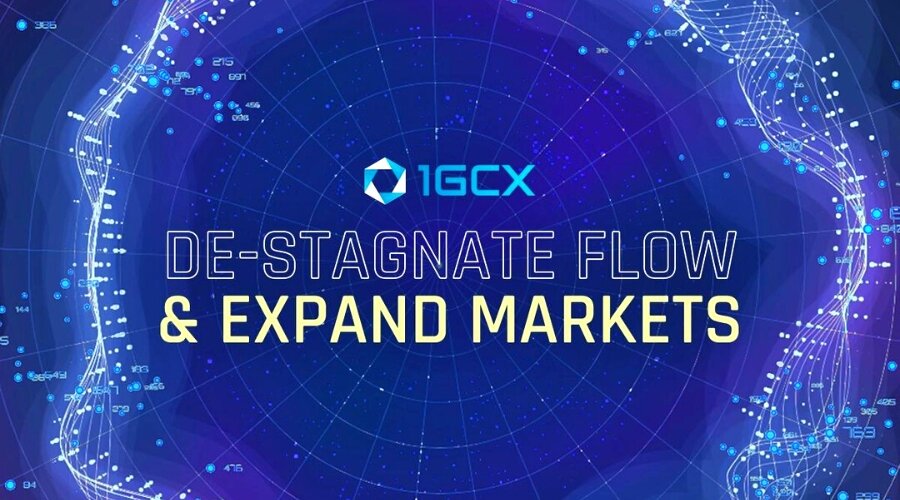
Infrastructure Powered By Blockchain Is Shaping The Future Of Carbon Markets, Cryptocurrency, And Commodities
The threat of rising carbon dioxide emissions nearing 414.72 parts per million, a new historical high in 2021, as stated by the National Oceanic and Atmospheric Administration’s Climate in the United States, demonstrates that the environment is now a worldwide concern.
The threat of rising carbon dioxide emissions nearing 414.72 parts per million, a new historical high in 2021, as stated by the National Oceanic and Atmospheric Administration’s Climate in the United States, demonstrates that the environment is now a worldwide concern. Countries have made their commitment to reducing carbon emissions public. The United States, for instance, has publicly stated that strategy for environmental commodity measurement via the Bureau of Economic Analysis.
But, because it is virtually impossible to achieve zero carbon emissions for many industries, carbon offsetting has become a critical tool for offsetting residual emissions. Companies can pay for residual emissions according to this model through investments in carbon-absorbing projects. Carbon offsets are then used to record the number of credits required for an individual or a company to be carbon neutral.
This prompted Michael Wilson, the president and founder of 1GCX, to say: “environmental commodities, a class of assets that exist as non-tangible energy credits, are now recognized as the most crucial value creators in the next 10–50 years.”
There is likely a change in the conventional manner the world views energy and, more critically, value since the environment and carbon emissions have become top priorities for the globe.
As more countries adopt an energy-credit-first strategy, a value denominated in US dollars and debt that may never be repaid may become unsustainable.
Value, a perspective construct, may shift for countries to recognize non-tangible energy credits — specifically, carbon credits — on their balance sheets. Recognizing energy over dollars makes sense, given the size of the US debt and the fact that paying it off requires a budget surplus, which hasn’t occurred in the country since 2001.
There currently needs to be a unified carbon market solution that allows participants to quickly and seamlessly capture the value of carbon commodities. Today, several private companies provide carbon offsets to businesses and individuals, with each offset representing an investment in forestry or other projects with a negative carbon footprint.
Also Read,
Ghana Intends To Purchase Oil Using Gold Rather Than USD
Buyers can also purchase credits on a carbon exchange, but traditional finance (TradFi) has a bad reputation for being archaic and part of a suppressive system. High-quality carbon credits are scarce for various reasons, including differences in verification methods.
As a result, 1GCX believes that combining the best parts of TradFi with blockchain will be the only solution capable of supporting a global transition to this new value system.
“Freedom begins and ends with the decision to be responsible for yourself and your world, specifically the environment around you. Trade, economics, and currency are at the very core of our civilization. If freedom is to be ideal, then the only path forward is one of liberty and responsibility. Cryptocurrency is bringing money, value, systems, and philosophy to the forefront of people’s minds. We are at a precipice, a new age is upon us, and the choice is one of consciousness, which is the way we will go,” according to Michael Wilson.
1GCX is dealing with these issues head-on. By highlighting its most promising projects, the exchange represents a green technology that can bring the benefits of new markets to cryptocurrency market valuations. The resulting two-way bridge for carbon offset trading becomes part of a larger, holistic market that can facilitate crypto adoption, education, and connection.
To redesign its financial markets, 1GCX took a market-making, commodities-first approach, unlike others in the space. Furthermore, the integration and cross-application of crypto, commodities, and carbon credits distinguish this platform from other exchanges. For users, this means a new trading experience on the platform, with access to live carbon and energy markets. As a result, 1GCX will evolve into an ecosystem, beginning with a marketplace where ordinary people can access one of the best-kept secrets in global finance: carbon commodities, also known as Natural Asset Capital.
When it comes to the rest of the ecosystem, users will encounter transformative offerings centred on tokenized bonds, known as black bonds, and new payment systems that integrate crypto with crypto-commodity pairings.
Since May 11, 2022, 1GCX has offered trading pairs with Bitcoin, Dogecoin, Ether, USD Coin, and Tether, as well as some less common trading pairs against not only the US dollar but also the Canadian dollar, euro, and British pound, in addition to other well-known digital assets and physical commodities. The platform’s exchange has resolved to add new cryptocurrency assets every week based on the best fundamentals from TradFi. It also shares roadmap plans from a variety of offset verifiers around the world for creating the first digitized carbon assets. These assets are expected to be traded as early as Q4 2022.
Unlike today’s private exchanges, 1GCX will provide smooth and quick settlements with low fees. This means new users will have access to one of the most user-friendly platforms, even if they have never used a traditional exchange before.
“Our economic principles of open and transparent markets begin with increasing the flow of capital and accounting for unavoidable emissions through the use of free market solutions such as carbon offsets in a way that benefits everyone,” said R.A Wilson, the chief technical officer of 1GCX, reiterating the mission of the company.
Also Read,





